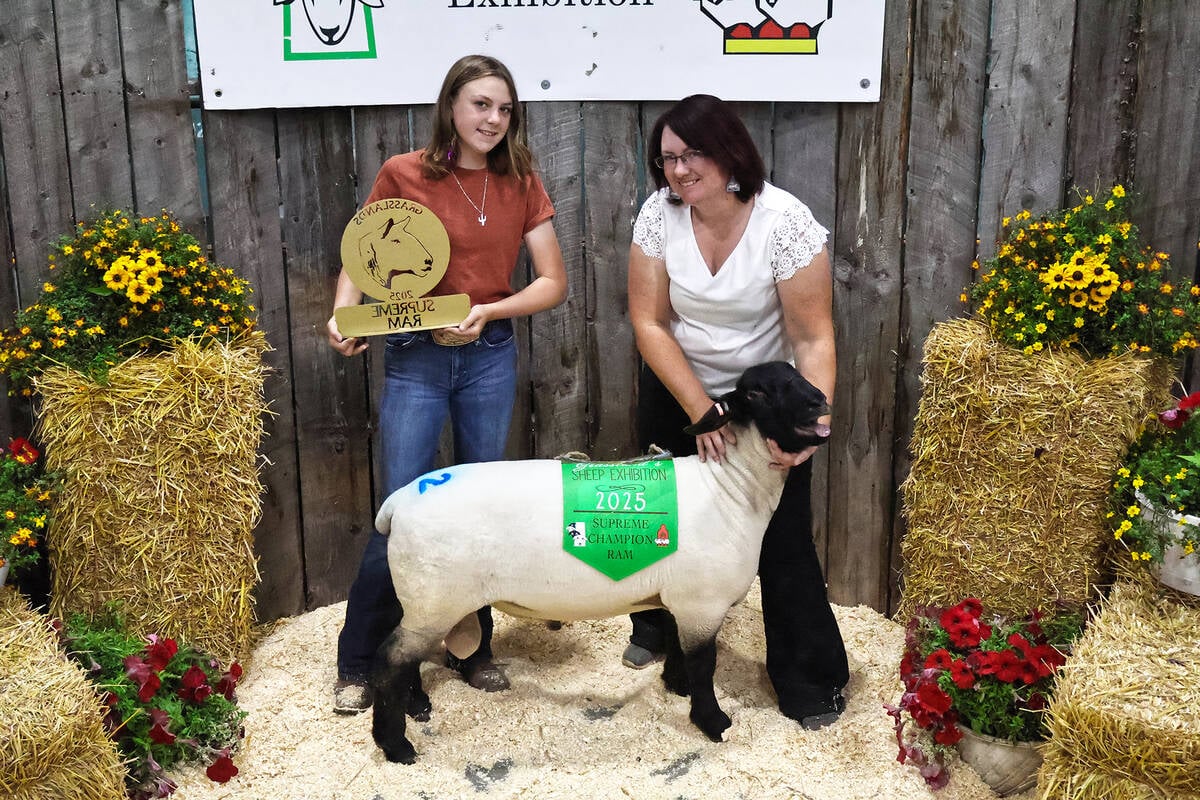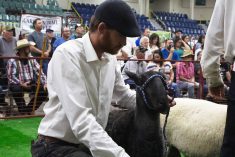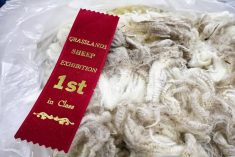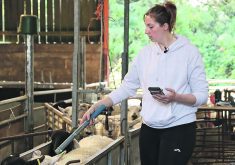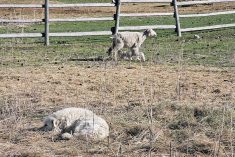HUMBOLDT, Sask. — Even with all the recent challenges faced by the sheep industry, there has also been plenty of good news for western Canadian producers.
It has been a busy susmmer with the 48th annual Grasslands Sheep Exhibition held recently in Humboldt, Sask. following the All Canada Sheep Classic in Brandon. Many producers pulled double duty and showed animals at both shows.
Approximately 200 animals were penned in the Humboldt arena, including 160 purebred Canadian Arcott, Suffolks, Dorset, Ile-de-France, Cheviot and Texel animals. All were up for sale at the show’s auction.
Read Also

Pork sector targets sustainability
Manitoba Pork has a new guiding document, entitled Building a Sustainable Future, outlining its sustainability goals for the years to come.
Gordon Schroeder, executive director of the Saskatchewan Sheep Development Board, said he expected high prices for quality animals.
“The Canadian classic last weekend was strong, so we’re going to see some strong prices tomorrow, and we’re on DLMS (Direct Livestock Marketing Systems) as well. We’re going to see a lot of bidding from outside the province, and so expecting good things tomorrow,” he said in mid-July.
Alyssa Boles of Cool Ally Ranch in Tompkins, Sask., had back-to- back wins with her Ile-de-France ewes taking home supreme champion in both Brandon and Humboldt.
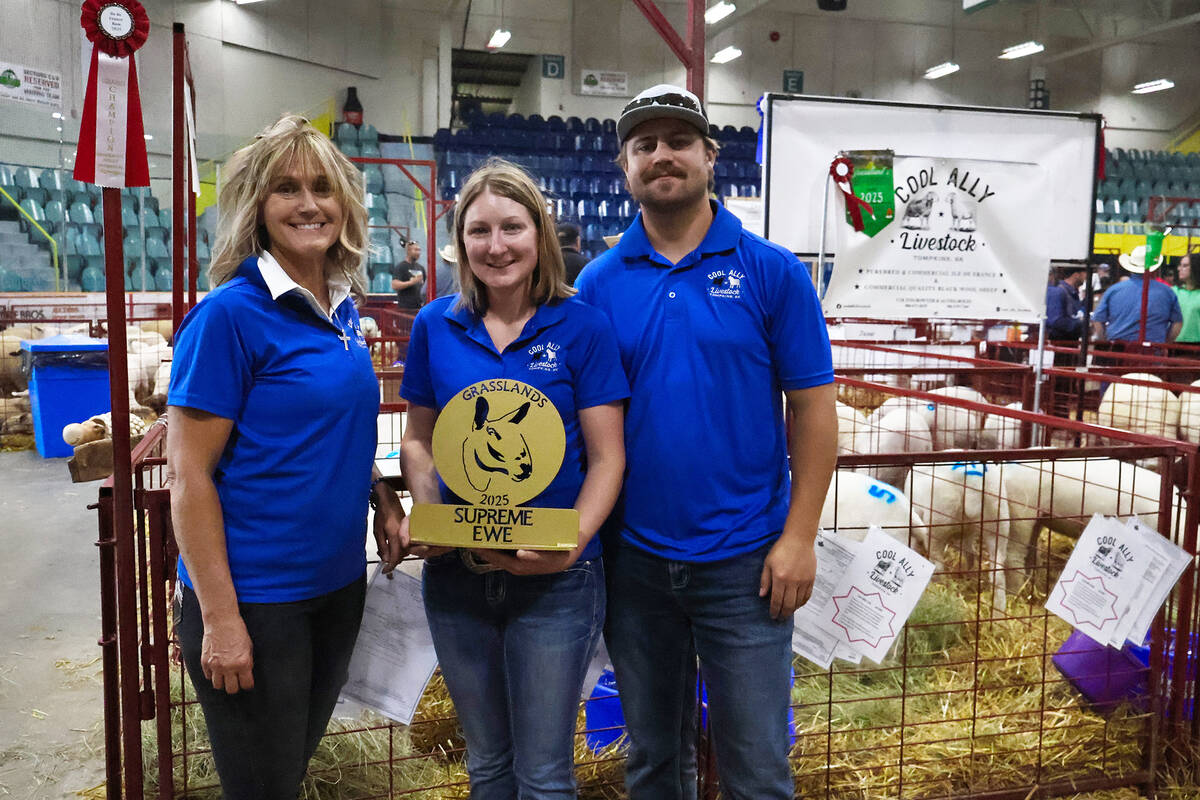
Her champion yearling ewe went for $2,500 in Brandon, and her champion ewe lamb was the full package of length, depth and formation. They will be keeping her sister for their own breeding stock, said Boles.
The double win means they are on the right track for producing the sheep they want to produce, she said.
“We want to produce sheep that work for the people. We like to be producing easy-keeping sheep that work on the rangeland, especially because we’re from southern Saskatchewan. They grow well on not much for grass in the pasture.”
Jo Walker of Furze Farms took home supreme champion for her Suffolk ram in Humboldt, a repeat performance for the producer from Moosomin, Sask.
Walker’s champion yearling dorset ram sold for $3,800 in Brandon the weekend before, so Walker was expecting good things in Humboldt.
“Prices of breeding stock have been excellent this year. The meat prices is high still. It’s good to be in sheep.”
Walker also has cattle on her ranch, and she’s seeing high market prices for both animals this year. Usually when sheep are up, cattle are down and vice versa, she said, but both have been strong this year, which is good to see.
Commercial animals of two to three per pen were not as strong a showing as the purebred classes in Humboldt, but Schroeder said producers are starting to realize the benefits of having strong genetics in their herds.
“We’ve really seen growth in strong genetics, and commercial people are starting to realize that strong genetics will make a big improvement in your margins, and so I would expect sales to be very strong.”
Canadian sheep producers only provide 35 per cent of the domestic market right now, said Schroeder, so that means that the rest are coming through imports.
“If we had the real demand, if it was available in all the stores, what would the consumption be? There’s huge opportunity for growth.”
The Cache Valley virus that infected herds last fall meant a shortage of lambs in the spring. Many were aborted and malformed due to the mosquito-borne infection, said Schroeder, but that meant a shortage of lambs for an already short local market.
“Along with a strong demand for lamb, our prices have maintained very well. We’re higher now than we’ve been for a while this time of year. They’ve come down since May, June, but they’re still quite strong.”
According to the board’s market listings available on its website, prices peaked in March with $4 per pound for lambs between 55 and 80 lb. Since then, prices for all different weight classes have decreased by 70 to 80 cents per lb.
Prices earlier this summer ranged from $3.20 to $2.70 for lambs from 55 to 80 lb. to more than 110 lb., respectively, but Schroeder said prices are still strong.
Given the challenges of feeding lambs during the heat of summer, producers have slowed down on finishing their lambs until the evenings start to cool off in the fall, Schroeder said.
Recent sheep shows have also shown the future of the sheep industry. Not only are there great animals in the ring but great young people as well. Schroeder said the future of the industry is strong with plenty of young families getting involved in the industry.
“We have 54 kids in our junior class tomorrow morning. It’s a great industry for families, and we’re seeing families go in and growing strong flocks. It’s a real growth opportunity.”
Walker sold 18 lambs to 4-H club members in Weyburn, Sask., in March. All of the young members had great success growing the lambs out, she added.

